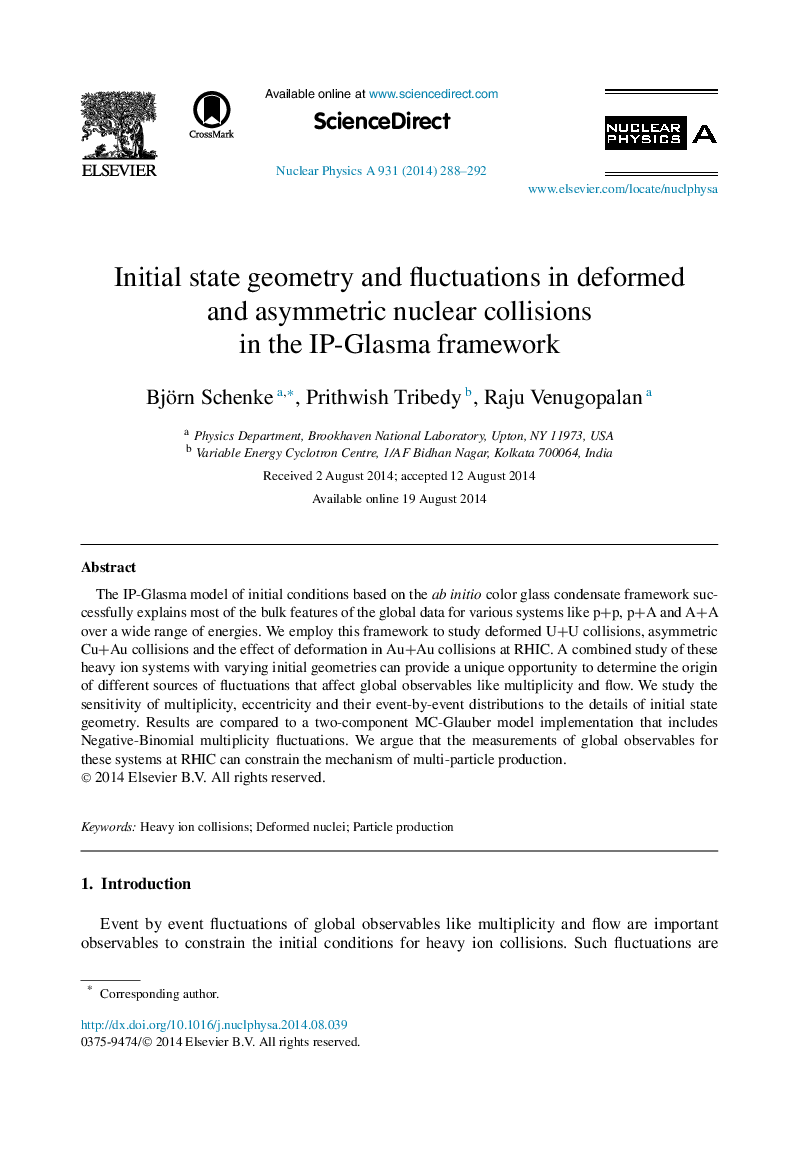| Article ID | Journal | Published Year | Pages | File Type |
|---|---|---|---|---|
| 1836452 | Nuclear Physics A | 2014 | 5 Pages |
The IP-Glasma model of initial conditions based on the ab initio color glass condensate framework successfully explains most of the bulk features of the global data for various systems like p+p, p+A and A+A over a wide range of energies. We employ this framework to study deformed U+U collisions, asymmetric Cu+Au collisions and the effect of deformation in Au+Au collisions at RHIC. A combined study of these heavy ion systems with varying initial geometries can provide a unique opportunity to determine the origin of different sources of fluctuations that affect global observables like multiplicity and flow. We study the sensitivity of multiplicity, eccentricity and their event-by-event distributions to the details of initial state geometry. Results are compared to a two-component MC-Glauber model implementation that includes Negative-Binomial multiplicity fluctuations. We argue that the measurements of global observables for these systems at RHIC can constrain the mechanism of multi-particle production.
